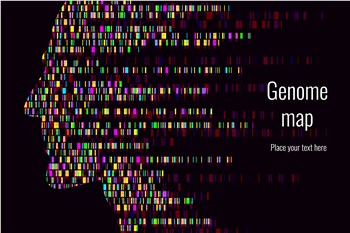Preimplantation Genetic Diagnosis (PGD)
Preimplantation Genetic Diagnosis (PGD) is a technique used to identify chromosomal abnormalities or genes responsible for monogenic defects in embryos created through in vitro fertilization (IVF) before pregnancy. Preimplantation Genetic Diagnosis (PGD) refers specifically to when one or both genetic parents has a known genetic abnormality and testing is performed on an embryo to determine if it also carries a genetic abnormality. In addition to PGD, Preimplantation Genetic Screening (PGS) refers to techniques where embryos from presumed chromosomally normal genetic parents are screened for aneuploidy.
Because only unaffected embryos are transferred to the uterus for implantation, Preimplantation Genetic Testing provides an alternative to prenatal diagnostic procedures (i.e., amniocentesis or chorionic villus sampling), which are frequently followed by the difficult decision of pregnancy termination if results are unfavorable. PGD and PGS are presently the only options available for avoiding a high risk of having a child affected with a genetic disease prior to implantation. It is an attractive means of preventing heritable genetic disease, thereby eliminating the dilemma of pregnancy termination following unfavorable prenatal diagnosis.
Indications for Preimplantation Genetic Diagnosis
Preimplantation Genetic Diagnosis (PGD) is recommended when couples are at risk of transmitting a known genetic abnormality to their children. Only healthy and normal embryos are transferred into the mother's uterus, thus diminishing the risk of inheriting a genetic abnormality and late pregnancy termination (after positive prenatal diagnosis).
1) Monogenic Disorder
Couples with a family history of X-linked disorders (Couples with a family history of X-linked disease have a 25% risk of having an affected embryo [half of male embryos].)
Carriers of autosomal recessive diseases (For carriers of autosomal recessive diseases, the risk an embryo may be affected is 25%.)
Carriers of autosomal dominant diseases (For carriers of autosomal dominant disease, the risk an embryo may be affected is 50%.)
2) Preimplantation HLA typing with or without single gene disorders for Haemopoietic Stem Cell Transplantation (HSCT)
3) Numerical and Structural Chromosomal Abnormalities
Couples with chromosome translocations, inversion carrier which can cause implantation failure, advanced maternal age, recurrent pregnancy loss, or severe male infertility.
Sex-linked disorders
X-linked diseases are passed to the child through a mother who is a carrier. They are passed by an abnormal X chromosome and manifest in sons, who do not inherit the normal X chromosome from the father. Because the X chromosome is transmitted to offspring/embryos through the mother, affected fathers have sons who are not affected, but their daughters have a 50% risk of being carriers if the mother is healthy. Sex-linked recessive disorders include; Hemophilia, Fragile X syndrome, BMD / DMD (Becker Muscular Dystrophy / Duschenne Muscular Dystrophy), and hundreds of other diseases. Sex-linked dominant disorders include; Rett syndrome, Incontinentia pigmenti, Pseudohyperparathyroidism, and Vitamin D–resistant rickets.
Single gene defects
PGD is used to identify single gene defects such as Beta Thalassemia, Cystic Fibrosis, Spinal Muscular Atrophy, Sickle Cell Anemia, and late onset diseases like Huntington Disease. In such diseases, the abnormality is detectable with molecular techniques using Polymerase Chain Reaction (PCR) amplification of DNA from a single cell or a few cells depending on biopsy type. PGD can also be used to identify genetic mutations like BRCA -1, which does not cause a specific disease but increases the risk of a set of diseases. Preparation for the test is necessary prior to starting a PGD cycle. In certain cases, it may be necessary to test blood and buccal cells from other family members. All tests must be scheduled in advance and coordinated through the Acıbadem Labgen Genetics Diagnostic Center's team.
In Acibadem Labgen Genetic Diagnostic Center we offer PGD for any genetic disseases with an identified mutation. We can be perform to identify any single gene disorders for which molecular testing is possible. Our team experienced with they had performed PGD for more than 100 different type of single gene disorders.
We have strog QM (Quality Manegement) system.
Human leukocyte antigen (HLA) matching
Among one of the main indications of PGD is preimplantation HLA matching. In HLA matching, embryos are screened for HLA-types compatible to those of an ill child from the patient couple. This technique can be applied not only to exclude the presence of a genetic disorder but also provide a potential donor for stem cell or bone marrow transplantation to an affected child with monogenic diseases, including thalassemias or acquired malignancies such as leukemia. In another words in cases such as leukemia, where the child needing stem cell transplantation has an illness that is not caused by the inheritance of a defective gene, HLA-typing is the only testing necessary. However, if the illness is caused by a mutation passed from one generation to the next (parent to child), then an additional test can be performed from the same biopsy. The only embryos implanted to the mother’s uterus will be those that are HLA compatible and free of the disease-causing mutation(s). Acibadem Labgen offers PGD for any genetic disease with an identified mutation and HLA typing if necessary.


Examples for single gene disorders/HLA typing STR marker

Some of the monogenic disorders for which PGD has been performed in Acibadem Labgen
Adrenoleukodystrophy | Krabbe Disease |
Arthrogryposis-Renal dysfunction-Cholestasis (ARC) syndrome | Lafora Disease |
Bartter syndrome | Leber's congenital amaurosis |
Becker muscular dystrophy | Li–Fraumeni syndrome |
Beta Thalassemia | Limb-girdle muscular dystrophy |
Breast Cancer | Maple syrup urine disease |
Charcot Marie Tooth (CMT) | metachromatic leukodystrophy |
Citrullinemia | MTHFR deficiency |
Co-enzyme Q deficiency | Mucolipidosis Type I |
Congenital adrenal hyperplasia | Mucopolysaccharidosis Type I (Hurler Syndrome) |
Congenital deafness | Mucopolysaccharidosis Type IIIA |
Congenital factor VII deficiency | Mucopolysaccharidosis Type IIIB |
Cystic fibrosis | Mucopolysaccharidosis Type VI |
Delta beta talassemia | Myotonic Dystrophy |
Donohue syndrome | Nemaline myopathy |
Duschenne Muscular Dystrophy | Neurofibromatosis |
Ehler-Danlos Syndrome (EDS) Type VIIC | Niemann–Pick disease |
Epidermolysis bullosa simplex | Nonketotic hyperglycinemia |
Facioscapulohumeral muscular dystrophy (FSHD) | Osteogenesis imperfecta |
Familial Hemophagocytic lymphohistiocytosis | Osteopetrosis |
Familial hypomagnesaemia with hypercalciuria and nephrocalcinosis | Phenylketonuria |
Familial Mediterranean Fever | Polycystic kidney disease |
Fanconi Anemia | Pompe disease |
Fragile X syndrome | Propionic acidemia |
Fraser Syndrome | Retinoblastoma |
Galactosemia | Sickle Cell Disease |
Glucose-6-phosphate dehydrogenase (G6PD) deficiency | Spastic Paraplegia Type III |
Hereditary multiple exostoses | Spastic Paraplegia Type V |
Hunter Syndrome | Spinal Muscular Atrophy |
Huntington's disease | Spinocerebellar ataxia type 2 (SCA2) |
Hyper IgM syndrome | Tay–Sachs disease |
Hypohidrotic ectodermal dysplasia | TNF receptor associated periodic syndrome (TRAPS) |
Hypomyelination and congenital cataract | Tuberous sclerosis |
Infantile neuroaxonal dystrophy | Usher Syndrome Type 1B |
Jubert Syndrome | Zelweger syndrome |
Keratitis–ichthyosis–deafness (KID) syndrome | |
Chromosomal disorders
Chromosomal disorders in which a variety of chromosomal rearrangements, including translocations, inversions, and deletions. Chromosomal abnormalities either numerical (PGS) or structural can be detected using Array Comparative Genomic Hybrisidation (aCGH).
There are three main types of chromosomal rearrangement and chromosomal structural abnormalities;
Reciprocal Translocation
Reciprocal translocation is caused by the rearrangement of parts between nonhomologous chromosomes.
Robertsonian Translocation
Robertsonian translocation is formed by the fusion of two acrocentric chromosomes (13,14,15,21,22). This rearrangement decreases the total chromosome number by one (45 chromosomes) without resulting in any phenotypic change in the carrier.
Balanced translocation carriers may have fertility problems and may experience multiple pregnancy losses due to unbalanced segregation products in their sperms or oocytes. While the frequency of balanced translocations in the newborn population is 0,2%, this rate increases up to 2,5% for couples experiencing repeated implantation failures and 9,2% for couples experiencing recurrent abortions.
Inversions
Inversions are rearrangements within the same chromosome. They occur if two breakages occur in the same chromosome and the chromosomal part between these two points turns over 180 degrees and sticks to the ends again.Though inversions are very rarely observed, inversion carriers may experience fertility problems. During the meiosis of gametogenesis, a single crossover event that occurs between the breakpoints produces unbalanced gametes that carry deletions, insertions, and either zero or two centromeres. PGD can be helpful in the identification of unbalanced gametes.
There are two types of inversions; Paracentric inversions and Pericentric inversions.
Either for numerical or for structural chorosomal abnormalities are detected by aCGH tecnique in Acibadem Labgen. aCGH uses different type of probes like oligo probe which Acibadem Labgen are using agillent 60 and 180K systems and also using Illumina BAC array probe system (24sure). These probes are distirubuted whole trough the chormosomes and enable to give diagnosis of each choromosome and their small pieceses. Gain or loss in chromosomal structure can be easily diagnosis by this system. Balanced choromosomal sturucture cannot be differentiated from normal structure. Some parents may have never achieved a viable pregnancy without using PGD because previous conceptions resulted in chromosomally unbalanced embryos and were spontaneously miscarried.
Indications for Preimplantation Genetic Screening
Most early pregnancy losses can be attributed to aneuploidy. Because only chromosomally normal embryos are transferred into the uterus, the risk of first and second trimester loss is markedly reduced. At present, most widely used list of indications for preimplantation genetic screening (PGS) are as folows:
Primary candidates for PGS can include the following:
• Women of advanced maternal age
• Couples with history of recurrent pregnancy loss
• Couples with repeated IVF failure
• Male partner with severe male factor infertility
These patient populations are at risk of failure with IVF because of a high proportion of aneuploid embryos. PGD is believed to decrease this risk by selecting chromosomally normal embryos that have a higher chance of implantation.
Array CGH (aCGH) testing allows for the detection of all 24-chromosome type aneuploidies in human embryos (either by Polar Body, day 3 blastomer, or blastocyst biopsy). At Acibadem Labgen, aCGH testing allows us to provide you with the prognosis of replacing normal embryos depending on the number of embryos produced and the age of the patient. Through aCGH, each and every chromosome in the embryo is tested; in this respect, aCGH differs from previous PGD tests that focused on only a few chromosomes (FISH). IVF center can now combine information gained by routine microscopic examination with the results of aCGH before they select embryos for transfer or freezing. Normal embryos have a higher chance of implantation and the resulting pregnancies have a lower chance of miscarriage. Testing embryos by aCGH may increase the likelihood of pregnancy, reduce the chances of a pregnancy loss.
Some examples of aCGH results;






Advanced maternal age
The risk of aneuploidy in children increases as women age. The chromosomes in the egg are less likely to divide properly, leading to an extra or missing chromosome in the embryo. The rate of aneuploidy in embryos is greater than 20% in mothers aged 35-39 years and is nearly 40% in mothers aged 40 years or older. The rate of aneuploidy in children is 0.6-1.4% in mothers aged 35-39 years and is 1.6-10% in mothers older than 40 years. The difference in percentages between affected embryos and live births is due to the fact that an embryo with aneuploidy is less likely to be carried to term and will most likely be miscarried, some even before pregnancy is suspected or confirmed. Therefore, using PGD to determine the chromosomal constitution of embryos increases the chance of a healthy pregnancy and reduces the number of pregnancy losses and affected offspring. One of the most frequent aneuploidies, trisomy (ie, 3 identical chromosomes present in the embryo), trisomy of chromosome 13, 18, 21 are commonly seen. These particular abnormalities also frequently leads to spontaneous miscarriage, the precise frequency of which is difficult to determine.
The foloowing figure is represents age and choromosomal abnormalities relation.

Recurrent pregnancy loss
Recurrent pregnancy loss (RPL) is usually defined as 2 or more consecutive pregnancy losses before 20 weeks' gestation. The cause is frequently unknown but may be secondary to fetal anomalies or uterine abnormalities. Chromosomal abnormalities are noted in 50-80% of miscarriage and couples with RPL have a higher percentage of aneuploid embryos than patients without RPL. However, the use of PGS increases the likelihood of delivery at term. PGS also benefits the subgroup of patients who have previously chromosomal abnormal fetus lossproven by cytogenetic analysis.
Recurrent IVF failure
Recurrent IVF failure (RIF) is usually defined as 3 or more failed IVF attempts involving high-quality embryos. Evidence suggests that this patient population has a higher number of chromosomally abnormal embryos. Although most IVF failures can be accounted for by embryonic aneuploidy, but various reasons could be considered like immunological and uterine factors may contribute to implantation failure.
Male factor infertility
Gonadal failure in men has been linked to the generation of embryos with an increased incidence of inherited and de novo chromosomal abnormalities. Normal fertile men have approximately 3-8% of sperm that are chromosomally abnormal. This risk increases significantly in men with severe infertility (ie, low sperm count, poor morphology, and poor motility) to approximately 27-74% abnormal spermatozoa. Various genetic defects have been found to be associated with male factor infertility. This includes aneuploidy, most commonly Klinefelter syndrome, Robertsonian translocations, Y chromosome microdeletions, Androgen receptor mutations, and other autosomal gene mutations (eg, Cystic Fibrosis, sex hormone-binding globulin gene mutations). Therefore, a high risk of transmission of genetic mutations to the patient's offspring is associated with IVF involving ICSI. The use of PGS/PGD in couples with severe male factor infertility may decrease pregnancy rates but also limits the prevalence of chromosome abnormalities.
If couples do choose to proceed with PGS/PGD with any reason, they should be properly counseled on the procedure about IVF and PGD/PGS and decreased chance of conception due to the likely reduced number of normal embryos available to transfer.
Approach Considerations
The PGD/PGS procedure are performed together with IVF procedure and IVF procedure consists of ovarian stimulation, egg retrieval, egg fertilization, embryo development, embryo biopsy for PGD/PGS and embryo transfer (this procedure described and consulted by IVF speciliest and IVF stuff).
Before requesting Preimplantation Genetic Diagnosis (PGD), candidates should consult a geneticist or a genetic counselor to evaluate the risk of transferring their genetic abnormality to their offspring. Tests should be performed to confirm the diagnosis of the affected parent, to pinpoint the genetic change leading to the condition in question, and to ensure that the currently available technology can identify that genetic change in a polar body, cleavage state, or blastocyst embryo biopsy.



In order to have embryos to biopsy for PGD/PGS, patients must undergo in vitro fertilization (IVF). After fertilization of the egg with sperm, embryos are allowed to develop into cleavage-stage embryos. On day 3 after egg retrieval, a single blastomere is removed from the developing embryo for genetic evaluation of the embryo. Genetic evaluation is performed using PCR or comparative genomic hybridization (CGH). Nonaffected or normal embryos are then transferred into the uterus for subsequent implantation/pregnancy.
The first step in the procedure is an embryo biopsy. This refers to microsurgical removal of polar body 1 and 2 or one cell from a 3-day old or a few cells from a 5-day old embryo. The biopsied cells are then placed in special containers and sent by courier to a Acibadem Labgen Laboratory where each sample is analyzed by aCGH or PCR. Array CGH is unique in that it allows simultaneous screening of multiple locations along the entire length of every chromosome this can be posibble by whole genome amplification (WGA) from biopsy material. aCGH test can also detect rare chromosome abnormalities present in the sample, while other techniques may not. Array CGH does not require additional blood tests prior to the IVF cycle, thus there are no set up or cancelation fees. WGA give opportunity to analysis single gene disorders chromosomal abnormalities at the same samples if the indications are present for candidate couples. The outcome of the PGD cycle is dependent on patient age and the number of analyzable and normal embryos.




















